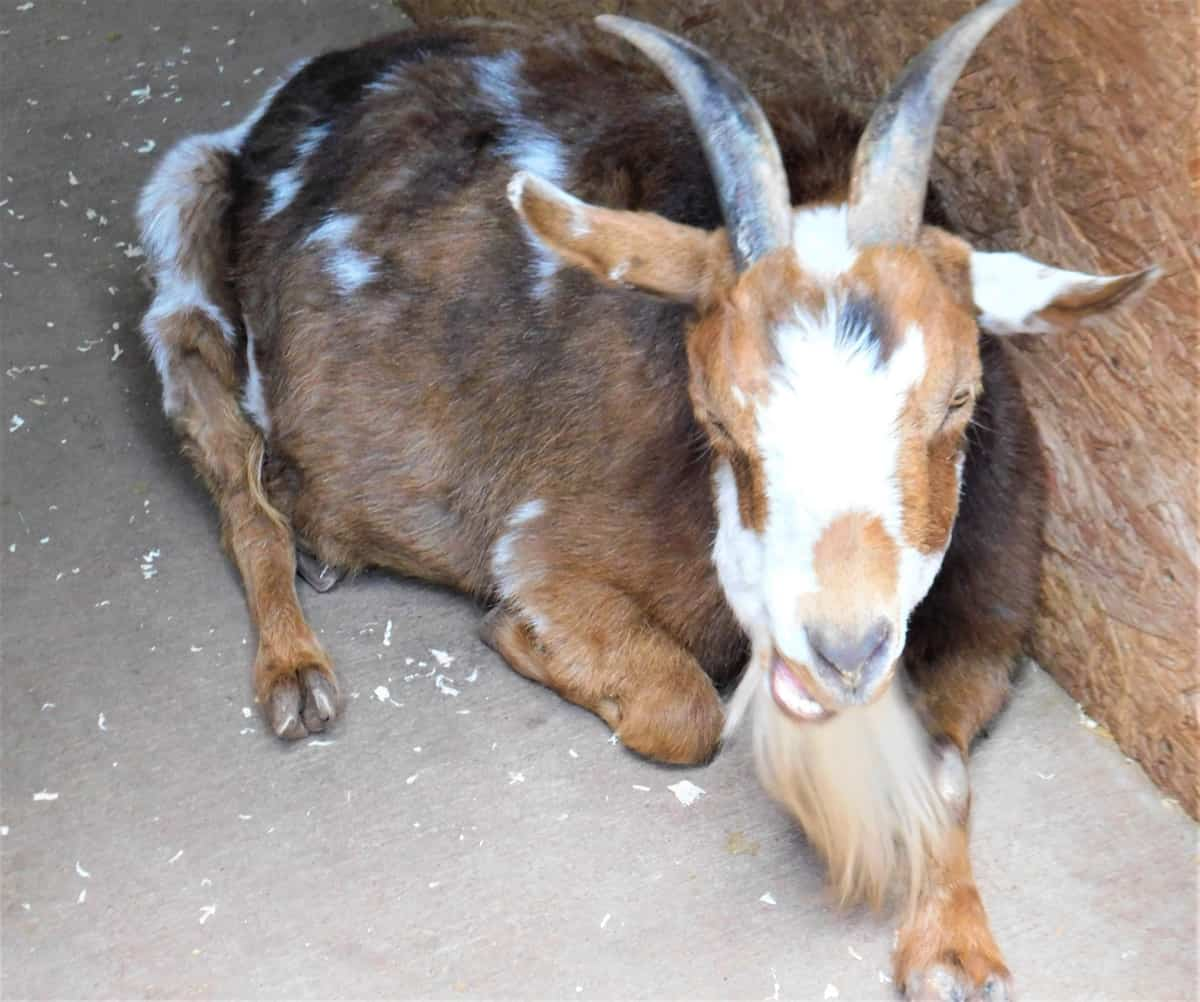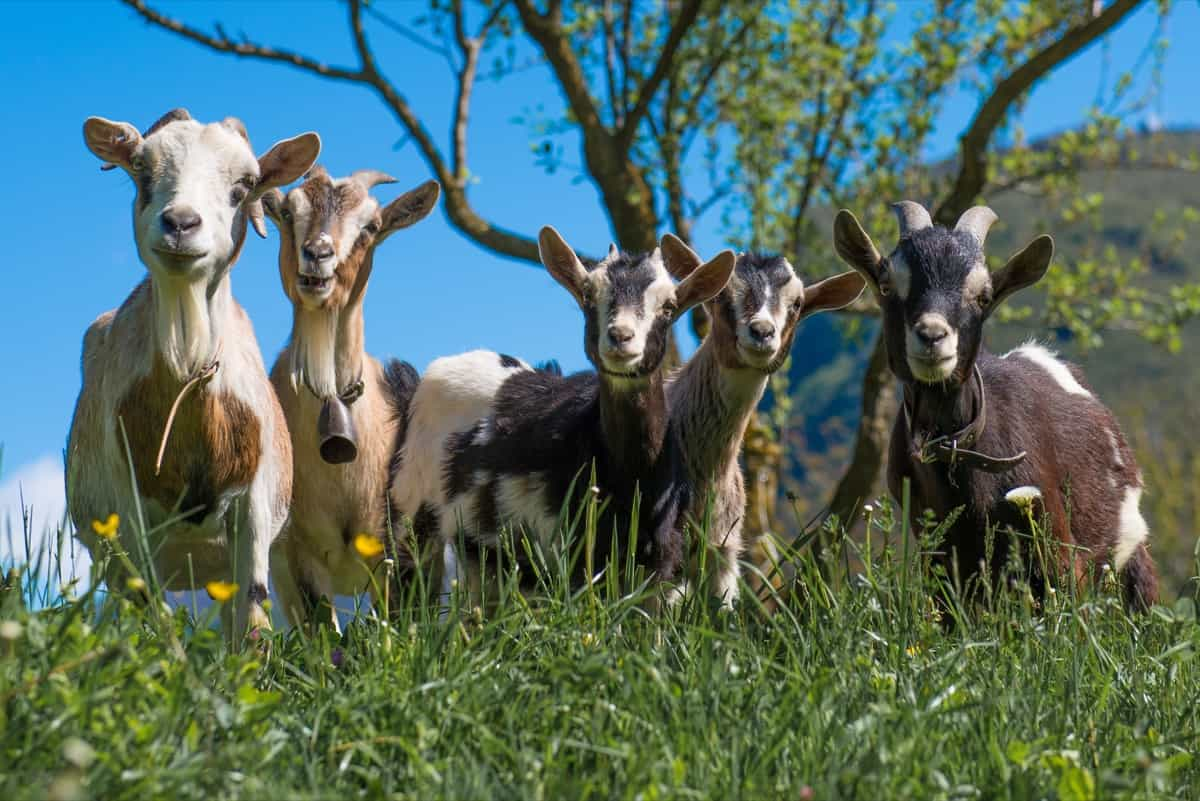Contagious caprine pleuropneumonia (CCPP) is a highly infectious disease that affects goats, sheep, and wild ruminants. This disease is caused by the bacterium Mycoplasma capricolum subspecies capripneumoniae, which can spread quickly among susceptible animals through direct or indirect contact. CCPP is a significant threat to the livestock industry, as it can result in severe respiratory illness with high morbidity and mortality rates.

The disease is characterized by sero-fibrinous pleuropneumonia, which can lead to respiratory distress, fever, and coughing. The rapid spread of CCPP among susceptible animals can result in significant economic losses, especially in areas where small-scale farmers rely on goats for their livelihoods. Due to the high mortality rate, CCPP is considered a significant threat to animal health, welfare, and food security.
Contagious Caprine Pleuropneumonia Management in Goats
Causes of Contagious Caprine Pleuropneumonia Disease
Contagious caprine pleuropneumonia (CCPP) is caused by a bacterium called Mycoplasma capricolum subspecies capripneumoniae. The bacteria can survive for long periods in the environment. They can be transmitted through direct contact between infected and susceptible animals or indirect contact with contaminated feed, water, or equipment. The disease can also be spread through the air over short distances.
Factors contributing to the spread of CCPP include poor animal husbandry practices, inadequate biosecurity measures, and the movement of infected animals across borders. High-density populations of goats and mixed farming systems where goats are kept with other livestock can also increase the risk of disease transmission.
CCPP can occur in goats of all ages, but young animals are particularly vulnerable. Stressful conditions such as transport, malnutrition, or concurrent infections can also increase the severity of the disease.
Symptoms of Contagious Caprine Pleuropneumonia Disease
- Contagious caprine pleuropneumonia (CCPP) is a respiratory illness that primarily affects goats but can also affect sheep and wild ruminants. The disease can occur in peracute, acute, or chronic forms in endemic areas.
- In the peracute form, affected goats may die within 1-3 days without premonitory clinical signs. In acute infection, the initial signs are high fever, lethargy, and anorexia, followed by coughing and labored breathing within 2-3 days.
- The cough is frequent, violent, and productive, and the animal may have difficulty moving and standing with its front legs wide apart and neck stiff and extended. Other symptoms include continuous saliva drooling, grunting or bleeding in pain, frothy nasal discharge, and stringy saliva. Pregnant goats may abort.
- Chronic cases exhibit chronic cough, nasal discharge, and debilitation. Pathological features during necropsy are limited to the respiratory system, with acute cases characterized by unilateral pneumonia and sero-fibrinous pleuritis with straw-colored fluid in the thorax.
- The lung is granular with copious straw-colored exudates oozing out on the cut section, and pea-sized yellow-colored nodules may be present in the lungs surrounded by areas of congestion. The regional lymph nodes, mainly bronchial lymph nodes, may be enlarged.
In case you missed it: Dermatophilosis Management in Goats: Disease Symptoms, Treatment, Diagnosis, and Prevention

Disease Cycle of Contagious Caprine Pleuropneumonia in Goats
- The main mode of transmission of CCPP is through inhalation of infected aerosols, which can spread the disease up to a distance of 50 meters.
- Direct contact with infected animals is another significant source of transmission. The bacteria can also survive for a short period in the external environment, which limits their transmission.
- However, in cold, moist, and overcrowded environments, the bacteria can persist for longer periods, resulting in severe outbreaks, particularly in winter.
- CCPP significantly impacts the livestock industry, resulting in high morbidity and mortality rates in affected herds. The disease can lead to severe respiratory illness, affecting the productivity and welfare of infected animals.
Diagnosis of Contagious Caprine Pleuropneumonia in Goats
Contagious caprine pleuropneumonia (CCPP) can be diagnosed using various methods, including cultural, biochemical, serological, and molecular techniques, along with clinical signs and imaging techniques like ultrasonography and X-rays. The following are the commonly used diagnostic methods for CCPP in goats:
- Cultural isolation and identification: This is a conventional method for detecting Mycoplasma capricolum subsp. capripneumoniae (Mccp) from lung tissue and pleural fluid at necropsy. The colonies of Mccp have a characteristic ‘fried egg-like appearance’ under the microscope.
- Polymerase chain reaction (PCR): PCR is the technique of choice for diagnosing CCPP, especially in live animals. It is a sensitive and specific method that detects the DNA of Mccp.
- Immunological methods: Agglutination tests, enzyme-linked immunosorbent assay (ELISA), fluorescent antibody test (FAT), complement fixation test (CFT), and passive or indirect hemagglutination tests (IHT) are the immunological methods used for the diagnosis of CCPP. These tests detect specific antibodies produced by the infected animal’s immune system in response to Mccp.
- Latex agglutination test: This is a rapid and convenient method for detecting Mccp antibodies in infected animals’ whole blood or serum. It is increasingly used as a pen-side test in diagnostic laboratories.
Treatment and Control of Contagious Caprine Pleuropneumonia Disease
- Treatment of CCPP primarily involves using antibiotics, such as tylosin and oxytetracycline.
- Tylosin is the drug of choice against Mccp and is often administered at 10-20 mg/kg body weight once daily for 3-5 days.
- Oxytetracycline is also found effective when administered in the early stages of infection.
- In addition to treatment, control of CCPP also involves measures to prevent the spread of the disease. This includes implementing biosecurity measures, such as quarantining and isolating infected animals, disinfecting equipment and facilities, and limiting the movement of animals.
- Vaccination is also an effective means of control; several vaccines are available for goats. These vaccines are typically composed of inactivated or attenuated Mccp organisms and can provide immunity for several months.
Preventive Measures of Contagious Caprine Pleuropneumonia Disease in Goats
- Quarantine: New animals should be quarantined for at least 30 days and tested for the disease before being introduced into the flock.
- Hygiene: Maintaining good hygiene practices, such as cleaning and disinfecting pens, equipment, and feeders, can help prevent the spread of the disease.
- Biosecurity: Controlling the movement of animals, people, and vehicles can help prevent the spread of disease between farms.
- Vaccination: Using commercially available CCPP vaccine containing inactivated Mccp suspended in saponin can help protect for over a year.
- Early detection and treatment: Prompt diagnosis and treatment with appropriate antibiotics, such as tylosin or oxytetracycline, can help control the spread of the disease and reduce mortality.
- Slaughter of infected animals: Infected animals should be identified and immediately slaughtered to prevent the further spread of the disease.
In case you missed it: Enterotoxemia Management in Goats: Disease Symptoms, Treatment, Diagnosis, and Prevention

Conclusion
The disease is characterized by severe respiratory symptoms, including dyspnea, nasal discharge, coughing, and fever, and can lead to high mortality rates in infected animals. CCPP can be diagnosed through various methods, including cultural, biochemical, serological, and molecular techniques.
Treatment options for CCPP are limited, and prevention through proper biosecurity measures, flock testing, and vaccination is crucial for controlling the spread of the disease. Effective control of CCPP requires cooperation between farmers, veterinarians, and government authorities to minimize the impact of the disease on animal health, productivity, and the livelihoods of those who depend on goat farming.
- Types of Fungicides Used in Agriculture
- Common Issues in the Fruit Development Stage of Pomegranate Farming
- Fruit Development Issues in Papaya: Easy Solutions and Treatment
- Soil-Borne Diseases and How to Protect Your Plants
- Practices to Prevent Disease Spread in the Garden
- From Wilted to Thriving: How to Treat Root Rot Naturally in Houseplants
- Natural Remedies to Cure Brown Spots on Fig Tree Leaves
- Natural Solutions for Poinsettia Problems: 100% Effective Remedies
- How to Control Calla Lily Problems: Natural Remedies for Leaf and Flower Problems